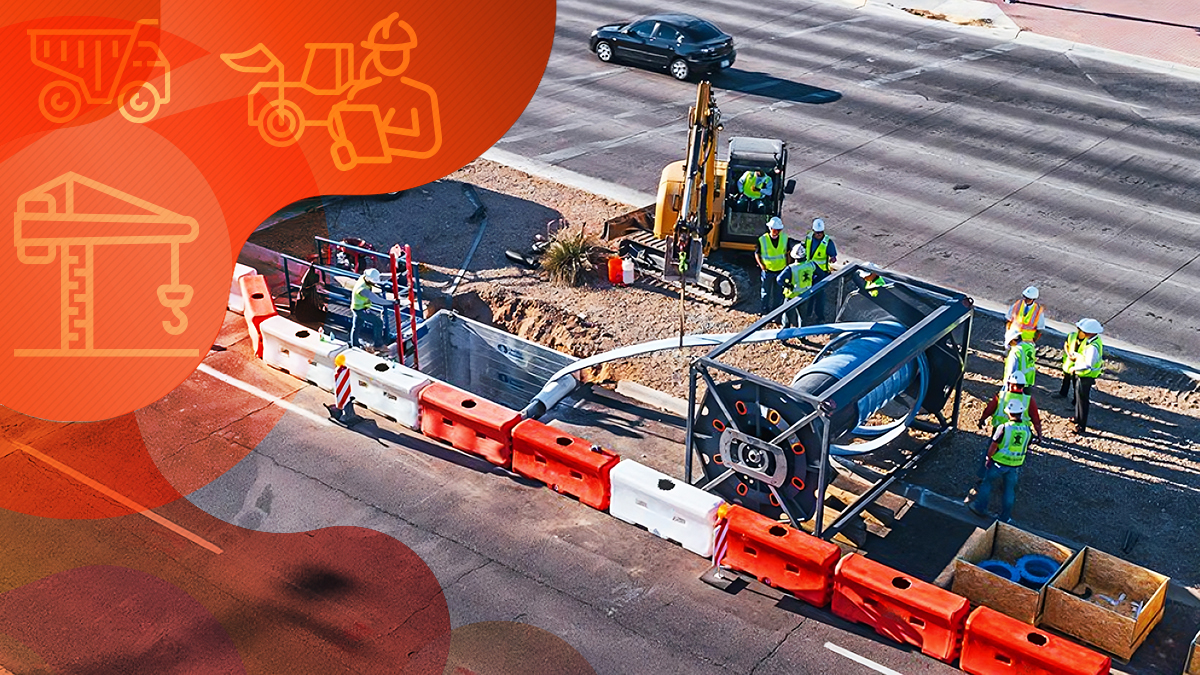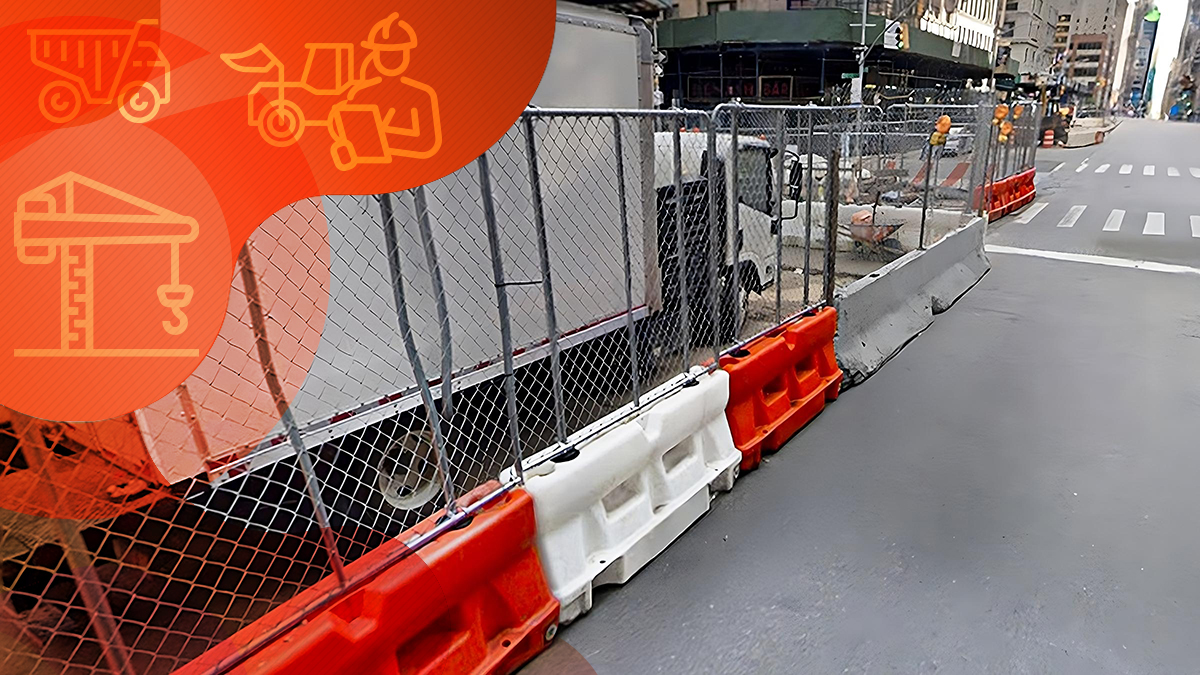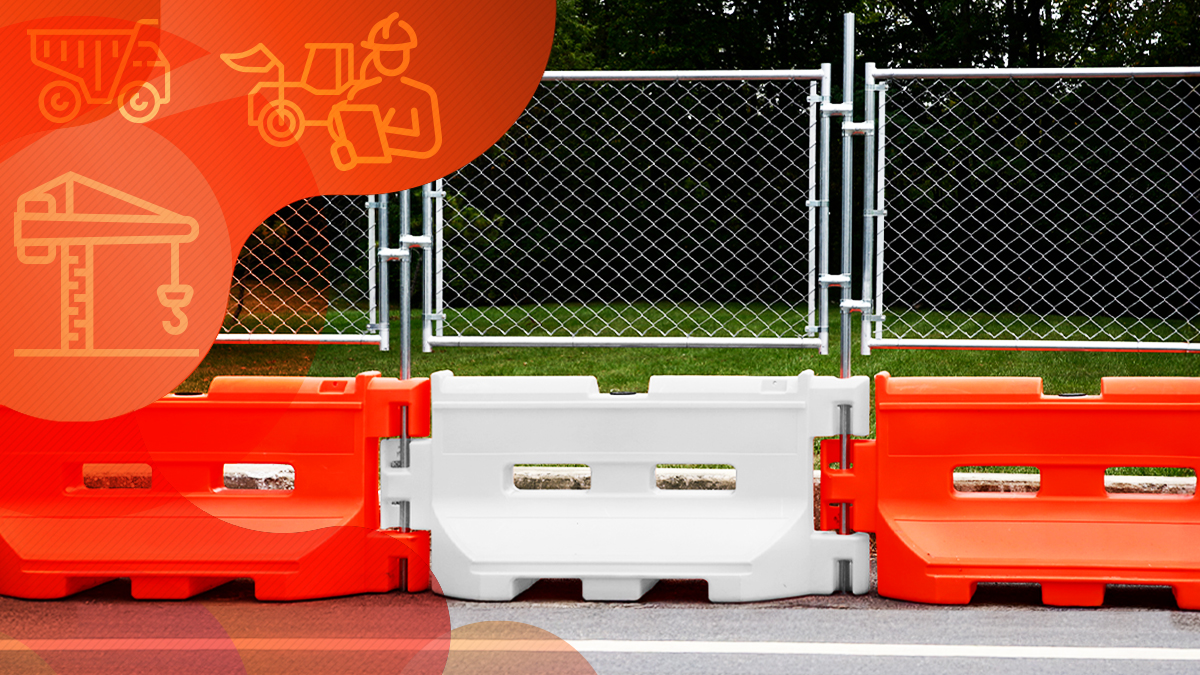Starting a Temporary Fencing Business: JSC’s Success with SONCO
Discover how JSC leveraged SONCO’s Anchor Base products to expand their business and enhance their customer satisfaction.

When Joe and Eula Boudreaux started Joe’s Septic in 1963, they weren’t looking to become a leading septic and portable sanitation provider on the Gulf Coast. Instead, they focused on delivering the best service possible — one customer at a time. That focus fueled their growth, creating a multi-generational company.
Today, Joe’s Septic Contractors (JSC) Inc. specializes in renting portable waste management solutions, such as portable toilets, handwashing stations, and restroom trailers, for construction sites and outdoor events. The company has expanded from a single location in Cut Off, Louisiana, to five locations throughout the state and the Gulf Coast.
As JSC extended its reach, Mason, Joe’s grandson, saw a need for temporary fencing for existing customers. Outdoor events such as concerts and fairs needed freestanding, self-supporting panels to secure areas and help with crowd control.
Temporary fences require counterweights for stability. Sandbags, concrete blocks, and Anchor Weights are examples of counterweights used with a temporary fence.
Sandbag Dilemmas: Securing Temporary Fences
Mason started with sandbags because they are the most common counterweights for temporary fencing in the United States. He soon discovered that sandbags were less durable and often broke open.
At one point, JSC was making its own sandbags. They would purchase a load of sand and shovel it into bags. After the bags were made, Mason was left with two inches of sand in the bottom of his truck. As he said, “It just made a mess.”
That experience was enough for Mason to look for alternatives. After finding the SONCO website, he decided to place his first order. He instantly knew that Anchor Bases were the answer. They were a “little bit more expensive, obviously, than sandbags, but they were definitely worth it.”
The weights were delivered on a pallet for convenient storage. Their stackability made them a flexible choice for temporary fence panels, where weights could be easily added.
Anchor Weights provided a cleaner look to the fencing and eliminated a potential tripping hazard, as people can stumble over dislodged sandbags.
Choosing a SONCO Fence Anchor Base
Fence bases anchor temporary fencing to maintain stability. Whether its parade routes or county fairs, temporary fencing must retain its structural integrity to avoid accidents, injuries, or property damage.
SONCO offers Anchor Weights and Anchor Blocks that both deliver a better return on investment than other solutions. They also improve stability while saving time and money.


JSC chose SONCO’s Anchor Blocks for their first order. These bases are designed as a sustainable, long-lasting alternative to standard sandbags and concrete blocks. They are made from recycled plastic, making them environmentally friendly.
Their high-visibility detailing adds a layer of safety while maintaining an appealing installation. Since his first purchase in 2020, Mason has ordered 1,650 Anchor Weights for the following reasons.
Better Return on Investment
As Mason discovered, the initial investment in Anchor Weights may be higher than sandbags, but the product performance offsets the upfront cost, as shown in the following table.
Anchor Weights vs Sandbags Investment Comparison
On average, Anchor Weights can be used at least 25 times before replacement. However, most sandbags must be replaced after a single use. That translates into one weight replacement for every ten sandbags.
Anchor Weights provide stronger and more resilient fence bases over their lifespans than traditional sandbags. Their plastic design can withstand extreme weather conditions with minimal damage, reducing ongoing maintenance expenses. Their stability is another reason Anchor Weights improve the durability of temporary fencing.


Fence Stability
Temporary fencing safety depends on stability. In regulated industries, temporary fences must withstand weather extremes such as high winds to protect workers and clients.
Mason saidt he had experienced situations where the Anchor Weights withstood the wind velocity generated by hovering helicopters, which average between 70 and 115 miles per hour. An EF1 tornado averages between 86 and 110 miles per hour.
The Anchor Weight design ensures consistent stability around the perimeter. Dislodged sandbags can weaken individual panels, making the entire fence unstable. Compromising the integrity of temporary fencing can lead to injuries and potential legal action.
Environmental Impact
Sandbags are made from burlap or woven polypropylene. Burlap fibers can rot when exposed to the elements, so they must be thoroughly dried before being stored. Ultraviolet light weakens polypropylene.
The longer they are exposed to the sun’s rays, the faster they deteriorate. The material is not biodegradable and contributes to the growing waste disposal challenges in the US.
Finding and maintaining the appropriate storage conditions for sandbags increases maintenance costs. Using polypropylene bags can negatively impact the environment, making them a poor choice for companies wishing to reduce their carbon footprint. More organizations are looking at a company’s record on sustainability as part of their purchasing criteria.
SONCO’s Anchor Bases uses recycled plastic to reduce the amount of waste that builds up in landfills. The design requires minimal storage space, reducing the consumption of environmental resources such as energy and building materials. Deploying SONCO’s Anchor Base demonstrates a rental company’s commitment to the environment.
Cost Savings
Anchor Weights can reduce storage and transportation costs. They can be stacked on pallets for easy storage and faster loading. Turnaround times are reduced because there’s no waiting for sandbags to be filled.
Sand costs between $5.00 and $50.00 per cubic yard, depending on location. That is equal to about 2,700 pounds of sand. Most sandbags average between 30 and 40 pounds, although some prefilled bags can weigh as much as 50. A load of sand can produce between 50 and 80 sandbags.
It’s estimated that one person can fill about eight sandbags per hour at an average weight of 30 to 35 pounds. One hundred feet of temporary fencing would require 200 sandbags, assuming no stacking is required.
With an average hourly rate of $15.06 (2024) for manual labor in the US, the cost to fill 200 sandbags would be about $400.00 (US).
Multiply $400.00 times the average Anchor Weight lifespan of 25 uses, and the equivalent cost for sandbags would be around $10,000.00.
Not only do Anchor Weights save money over their lifespan but they also free up resources to work on other tasks. Because they are not filling sandbags, employees can work on setting up new jobs and focusing on customer satisfaction.


Using Concrete Blocks to Stabilize Temporary Fence
Concrete blocks are often used as ballast for temporary fencing, especially on construction sites. However, they are bulky and can be a tripping hazard, resulting in injuries to workers and visitors. They are also prone to breaking and disintegrating over time, adding to the maintenance and replacement costs of concrete blocks as fence stabilizers.
Like their Anchor Weights, SONCO’s Anchor Blocks use recycled plastic with high-visibility details to withstand harsh weather conditions and heavy use. They are designed to retain structural integrity over an extended lifespan, minimize maintenance, and avoid the logistical challenges of concrete blocks.
To date, JSC has purchased 1,050 Anchor Blocks because they offer the same cost savings and lifespan as Anchor Weights. Mason has been “very satisfied with them. Their durability and functionality are great.”
Durability
Anchor Blocks are much easier to transport than concrete blocks because fewer blocks are needed to meet the same stability requirements.
On average, one Anchor Block is the equivalent of 20 concrete blocks. They are designed to withstand extreme weather conditions for a longer average lifespan than concrete blocks.
Cost Savings
The cost of a concrete block ranges from $1.25 to $4.00 per block. Suppose you need 100 concrete blocks to stabilize temporary fence panels. At a cost of $3.00 per block, the total purchase price would be $300.00.
Substituting Anchor Blocks at a ratio of 20 to 1, the cost of five Anchor Blocks would be $285.00. However, the real cost savings occur in the long run.
According to Mason, his Anchor Blocks only started cracking after at least three years of extensive use across multiple job sites.
Concrete blocks would not last as long when exposed to weather variations. The concrete may either dry up and become very brittle or soak up water, potentially leading to rust on the fence panel metal base and resulting in extra maintenance expenses.


Customer-Preferred for the Aesthetic Benefit
According to Mason, many customers now ask for the Anchor Bases rather than sandbags or blocks. They appreciate the cleaner look of the Anchor Bases. JSC leverages installations to promote the Anchor Base family.
For example, the company recently supplied 3,500 feet of fencing for the Crescent City Classic in New Orleans, Louisiana. They chose JSC and SONCO products because they were impressed by the fencing at the French Quarter Festival the year before. With minimal advertising, JSC’s temporary fencing business has grown rapidly.
Mason indicated that the last eight months were their busiest for supplying temporary fencing solutions.
SONCO’s fence Anchor Family provides JSC with a cost-effective solution for securing temporary fencing while delivering a customer-preferred solution. JSC’s success comes from its ongoing commitment to customer service and its determination to provide the best possible temporary fencing solutions.
Check out Mason’s video to see the results for yourself!
Following Mason’s Footsteps
Mason’s success in expanding his business with temporary fence rentals shows how site service companies can grow with the right strategy. Diversifying your business helps reduce vulnerability to market fluctuations while creating new revenue opportunities.
If you already provide services to job sites, you likely have a customer base that would benefit from temporary fence rentals. Adding this service can be a seamless way to expand your offerings and increase profitability.
Starting a new operation comes with challenges, which is why SONCO has developed a comprehensive resource hub to guide you through the process. Our expert materials cover every step of launching a fence rental business—from selecting the right products and reaching customers professionally to installing fences, privacy screens, and more.
Explore our free resources today and take the next step in growing your business.
Trend now

Reducing Impact Damage with Water-Filled Plastic Jersey Barriers
Understanding the effects of barrier materials on vehicles and their occupants can help improve road safety.

Choosing Between Concrete or Plastic Jersey Barriers
Not all barriers are built the same. Here’s what to know before choosing between plastic and concrete.

Advantages of Water Barriers with Fence Toppers
Learn how a fence topper transforms water barriers into a more secure, private, and effective work site solution.

